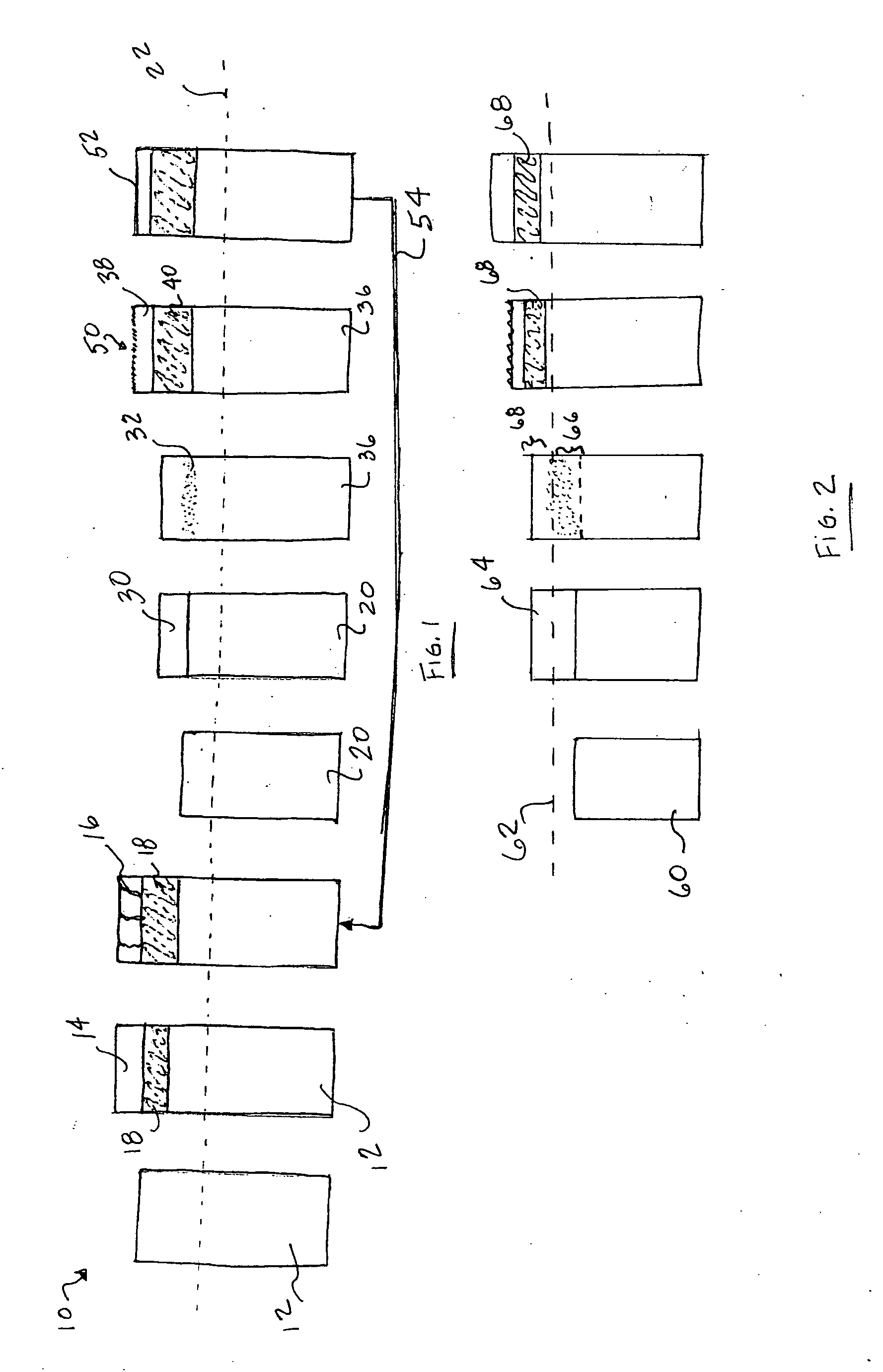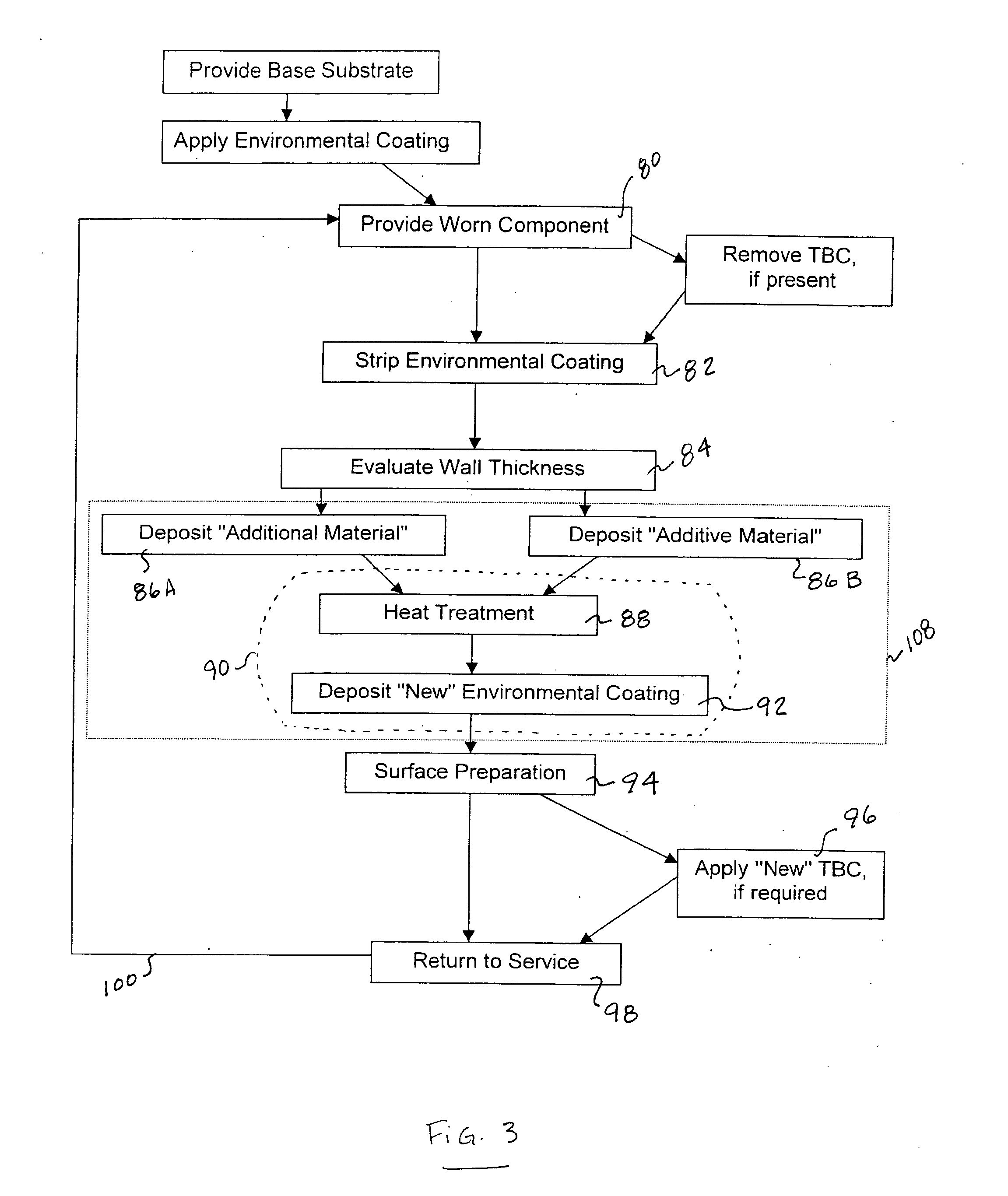Method for restoring or regenerating an article
a technology of article and regenerated parts, which is applied in the direction of machines/engines, mechanical equipment, superimposed coating processes, etc., can solve the problems of high temperature durability of engine components that must correspondingly increase, alloys alone are often inadequate to form turbine components located in certain locations, and coatings will typically require removal and repair
- Summary
- Abstract
- Description
- Claims
- Application Information
AI Technical Summary
Problems solved by technology
Method used
Image
Examples
examples
[0045]A button (substrate) comprising Rene N′5 superalloy is provided. A layer of additional Rene N′5 superalloy is deposited onto the substrate via a cathodic arc deposition process. A diffusion coating of aluminum is applied to the layer of additional Rene N′5 superalloy by ionic plasma deposition. The coated button is subjected to a heat treatment process (1975° F. (1079° C.) for 4 hours) followed by surface treatment.
[0046]A layer of additional R′142 superalloy is applied via ionic plasma deposition to a test button. The button plus additional material is subjected to a heat treatment process. Following the heat treatment process, an aluminide diffusion coating is deposited in a vapor phase deposition process.
[0047]A N′5 superalloy button has additional N′5 superalloy deposited thereon by an ion plasma deposition process. An aluminide diffusion coating is deposited via a vapor phase deposition process.
[0048]The examples show promising results in providing integral bonding betwee...
PUM
| Property | Measurement | Unit |
|---|---|---|
| Temperature | aaaaa | aaaaa |
| Temperature | aaaaa | aaaaa |
| Time | aaaaa | aaaaa |
Abstract
Description
Claims
Application Information
 Login to View More
Login to View More - R&D
- Intellectual Property
- Life Sciences
- Materials
- Tech Scout
- Unparalleled Data Quality
- Higher Quality Content
- 60% Fewer Hallucinations
Browse by: Latest US Patents, China's latest patents, Technical Efficacy Thesaurus, Application Domain, Technology Topic, Popular Technical Reports.
© 2025 PatSnap. All rights reserved.Legal|Privacy policy|Modern Slavery Act Transparency Statement|Sitemap|About US| Contact US: help@patsnap.com



